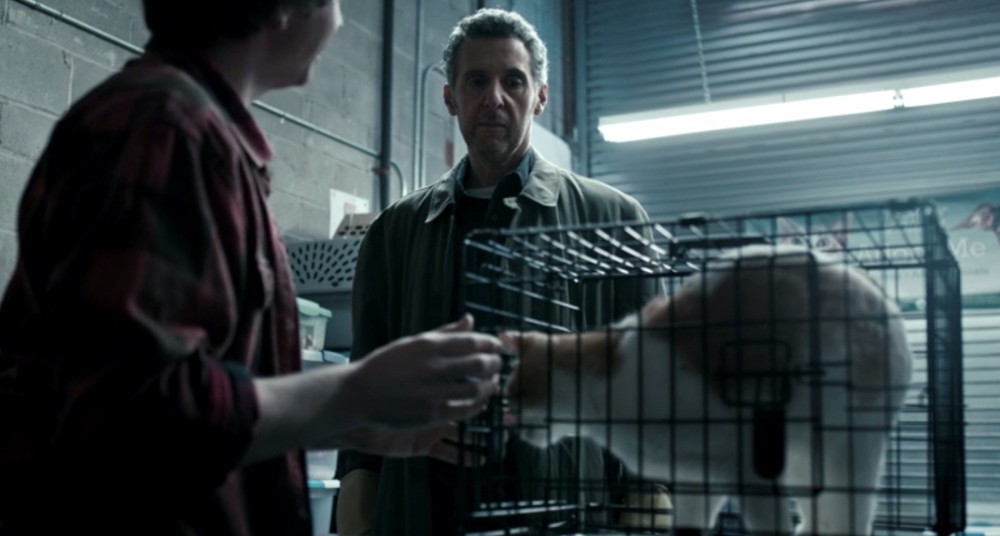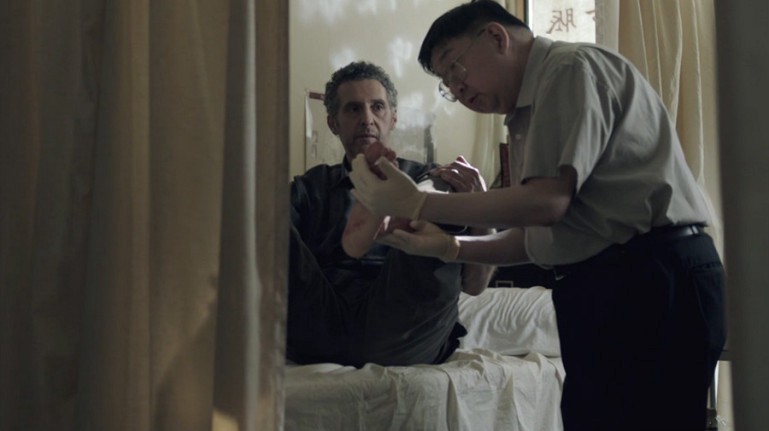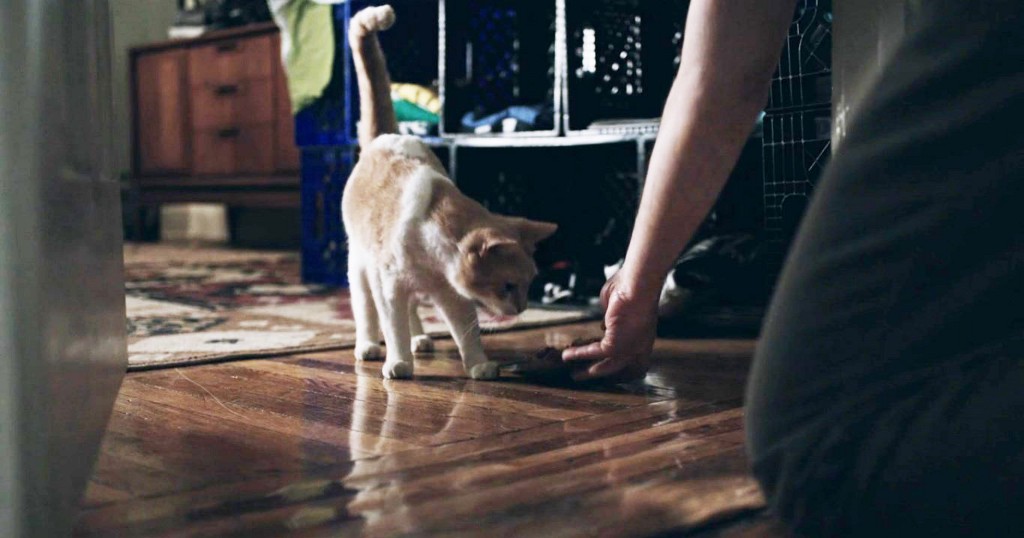The Extended Metaphor of the Cat and the Eczema
Was the symbolism in “The Night Of” maybe too much?

John Stone’s feet are so riddled with eczema he can no longer wear shoes, only a pair of beaten-up sandals, into which he frequently shoves his scratching chopstick. He is a bottom-feeder of a lawyer, his life a parable of loneliness. His ex-wife barely tolerates him, and the only person more embarrassed by him than the entirety of the New York criminal justice system is his own son. A stray cat found near the scene of his client’s alleged murder is his only true companion, despite his allergy to it.
The eczema is all over Stone’s body, but it’s especially intolerable on his feet, the swollen and shriveled slabs of flesh he needs to propel him forward. The doctors he sees are useless — their solutions cost Stone his money and/or his libido. He cares for the cat through a closed door, to protect himself from the dander. He shoves in toys, food, and clean litter, then takes solace in the corresponding sounds of the cat playing, eating, and shitting.
So begins the ballad of the cat and the eczema, the most prominent extended metaphor upon which the HBO miniseries “The Night Of” hangs its story, and near-total lack of resolution. Each scene is set piece of overt symbolism, sending up an endless array of analogies, which don’t contradict one another, but do undercut the potential for meaningfulness. Perhaps deliberately so.
In probing the potential guilt of murder suspect Nasir “Naz” Khan, the miniseries uses so much overt symbolism, that potential metaphors can be read onto even the most mundane actions. When everything appears to mean something, the heft of authorial intent fades away, leaving a Rorschach test of audience opinion in its place. For a show lacking in true closure, the possibilities become infinite.

With the exception of the pilot, every episode of “The Night Of” vacillates wildly between prestige drama and tacky procedural. When occupying the space of the latter, it was often comically garish in its poetic melodrama. In the season finale alone, the following examples would have been clear to even a first-time viewer:
•A mediocre, apathetic lawyer changing into sneakers and squeaking out of the courtroom after losing a case.
•Naz seeing his prison “protector” Freddie beating the crap out of a punching bag when he realizes Naz is leaving prison.
•Freddie giving Naz a copy of The Call of the Wild when he is released (because prison changed him, and he is wild now, and also “The Call of the Wild” is the name of the episode).
•Naz leaving the prison with two large plastic bags, because he has a ton of baggage now, OK?
“The Night Of” asks a lot of questions, the most prevalent of which is, What does it all mean? When dealing in such a dense set of metaphors, everything might be significant. But in this show, the things that truly matter remain as unclear as the “who” of the whodunit. The victim was murdered with a knife, and there was a convict near the scene whose go-to weapon is a knife. The victim’s stepfather, whom she openly hated, will inherit a small fortune in addition to her $10 million brownstone upon her death. These red herring plot points echo the conflation of overarching analogies, almost as if they have been reverse engineered. The show is warning its audience not to fall for the obvious distractions, while refusing to answer which items qualify as such.
In the end, Naz goes free, though nearly every life in question has been ravished by the trial, and we must look to the most consistent metaphor(s) for anything even remotely resembling resolution. With its final minutes, the show nudges us, once again, to the cat and the eczema.

By the penultimate episode, Stone’s eczema appears to be gone for good. He’s taken the cat to the pound, as if it was another failed scratch for his itch, carelessly thrown away. It’s a Chinatown doctor who finally grants Stone relief with a haul of non-FDA-approved drugs. (Stone sitting smugly in front of an all-male support group wearing closed shoes for the first time in years is possibly the most exuberantly ridiculous moment of the show. Maybe of any show.)
His eczema returns with a vengeance the day before a deadlocked jury will lead to Naz’s release. In an instant, the shortcut remedy turns on Stone. The dermatological affliction returns, this time leaving even his eye sockets encased in the red rot.
Later, while he’s on the phone with a client, an ASPCA commercial seizes his attention. “These are the forgotten ones,” the voiceover narrates. Stone sighs, as if this is too obvious even to him. He pulls on the gloves he must wear to cover the marks of his modern-day leprosy, and leaves his apartment. A time-lapse of light fades in and out beneath the door before the cat walks down the hall.
We never see Stone return home, however, and that’s a symbol in and of itself. We didn’t see all the pieces, and we never will. No character receives a happy ending — or any ending, really — and instead we have a portrait of the prison-industrial complex, painted in the colors of a skin rash and pet care.
The cat represents the individuals that get lost in the system, left to wander aimlessly except for the rare cases where someone benevolently takes an interest in them. The eczema is the plague of the system, Stone’s outsider status, and the excruciating resistance of fighting back. The doctors are the institutions, which claim they will help, but never, ever offer up a true solution. The non-FDA approved drugs are the improper path, the illusory panacea, which has ramifications that put the initial malady to shame. Struggling toward relief, or, at least, temporary distractions is the only option, even if it is all in vain.
Or maybe not. Maybe searching for answers in the criminal justice system is as futile as searching for meaning in the overt symbolism of “The Night Of.” Sometimes eczema is just eczema. Sometimes a cat is just a cat.
